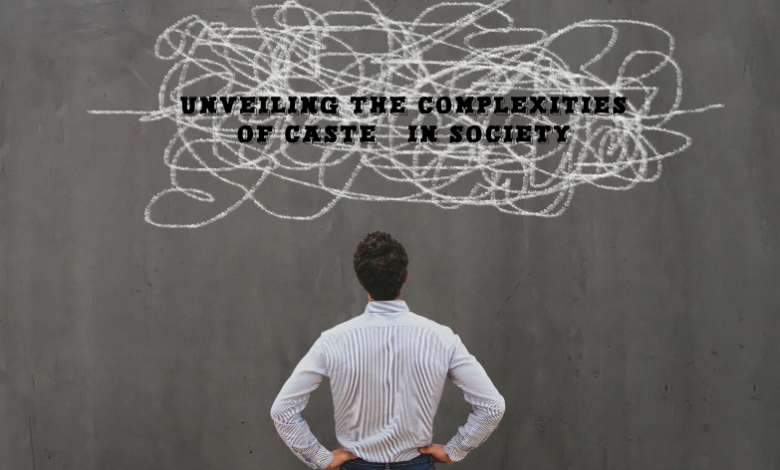Unveiling the Complexities of Casteò in Society

Casteò, a deeply ingrained social construct, has played a significant role in shaping societies and cultures around the world. In this article, we delve into the complexities of casteò, exploring its significance, evolution, challenges, and strategies for promoting equality and inclusion.
Introduction to Casteò
Casteò, often defined as a hierarchical social stratification system, has historical roots in various societies, particularly in South Asia. While the specific manifestations of casteò may vary across cultures and regions, its impact on individuals and communities remains profound.
Understanding the Significance of Casteò
Casteò influences various aspects of individuals’ lives, including social status, occupation, education, and marriage. It serves as a marker of identity and belonging, shaping interactions and relationships within communities. Despite its prevalence, casteò is also a source of discrimination, marginalization, and inequality for many individuals, particularly those belonging to lower castes.
The Evolution of Casteò in Society
Throughout history, casteò has undergone significant evolution, adapting to changes in societal norms, political landscapes, and economic structures. While traditional casteò systems were often based on hereditary occupations and social roles, contemporary manifestations of casteò may be influenced by factors such as urbanization, globalization, and migration.
Challenges Associated with Casteò
Despite advancements in social justice and human rights, casteò-based discrimination and prejudice persist in many parts of the world. Individuals belonging to lower castes often face barriers to education, employment, healthcare, and political participation, perpetuating cycles of poverty and inequality.
Breaking Down Stereotypes and Misconceptions
Addressing casteò-based discrimination requires challenging stereotypes and misconceptions that perpetuate prejudice and bias. By promoting empathy, understanding, and dialogue, individuals can dismantle harmful attitudes and foster a culture of inclusivity and respect.
The Intersectionality of Casteò and Other Social Constructs
Casteò intersects with other forms of discrimination, such as gender, race, ethnicity, and religion, creating complex and overlapping systems of oppression. Recognizing the interconnected nature of these social constructs is essential for addressing intersecting forms of discrimination and promoting social justice.
Promoting Equality and Inclusion
Efforts to combat casteò-based discrimination require a multifaceted approach that addresses systemic inequalities and promotes social cohesion. By advocating for equal rights, access to opportunities, and representation for marginalized communities, individuals and organizations can work towards creating a more inclusive society.
Strategies for Addressing Casteò-Based Discrimination
Casteò in Contemporary Context
In contemporary society, addressing casteò-based discrimination requires comprehensive strategies that address root causes and systemic inequalities. This may include legal reforms, affirmative action policies, and social programs aimed at empowering marginalized communities and promoting social mobility.
The Role of Education and Awareness
Education and awareness play a crucial role in challenging stereotypes, promoting understanding, and fostering empathy. By integrating lessons on casteò-based discrimination into school curricula and conducting community outreach and awareness campaigns, individuals can contribute to creating a more informed and compassionate society.
Government Policies and Interventions
Government policies and interventions are essential for addressing casteò-based discrimination and promoting social justice. This may include legislation prohibiting casteò-based discrimination, affirmative action programs, and initiatives aimed at promoting social cohesion and economic empowerment for marginalized communities.
Community Initiatives and Grassroots Movements
Community initiatives and grassroots movements play a vital role in advocating for social change and challenging entrenched systems of oppression. By mobilizing communities, raising awareness, and advocating for policy reforms, grassroots organizations can drive meaningful progress towards equality and inclusion.
Overcoming Casteò-Based Discrimination in Workplaces
Addressing casteò-based discrimination in workplaces requires proactive measures to promote diversity, equity, and inclusion. This may include implementing anti-discrimination policies, providing diversity training and education, and fostering a culture of respect and inclusivity among employees.
Conclusion
In conclusion, casteò remains a complex and deeply ingrained social construct that continues to shape societies and cultures worldwide. While efforts to address casteò-based discrimination and inequality have made significant strides, much work remains to be done. By promoting education, awareness, empathy, and advocacy, individuals and communities can work together to create a more just, equitable, and inclusive society.
FAQs (Frequently Asked Questions)
- Is casteò limited to specific regions or cultures?
- While casteò has historical roots in South Asia, similar systems of social stratification and discrimination exist in other parts of the world, albeit under different names and forms.
- How does casteò impact individuals’ daily lives?
- Casteò can influence various aspects of individuals’ lives, including social interactions, access to resources, opportunities for education and employment, and marital prospects.
- Are there laws against casteò-based discrimination?
- Many countries have legislation prohibiting casteò-based discrimination and promoting equal rights and opportunities for marginalized communities. However, enforcement and implementation of these laws vary and may be subject to challenges.
- Can casteò-based discrimination be eradicated completely?
- Eradicating casteò-based discrimination requires concerted efforts at multiple levels, including legal reforms, social programs, education, awareness, and community engagement. While progress has been made, achieving full equality and inclusion remains an ongoing challenge.
- How can individuals contribute to combating casteò-based discrimination?
- Individuals can contribute to combating casteò-based discrimination by challenging stereotypes, advocating for social justice, supporting marginalized communities, and promoting empathy, understanding, and inclusivity in their interactions and environments.
Read Also : certik 1.8b yoy 3.7b q3



